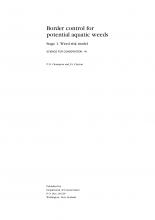Samoan Environment Forum: proceedings of the 2003 National Environment Forum|Fe'ese'esea'iga i aiga ma nuu o Samoa : aafiaga o le tofa i Tuana'i ma Saanapu / Tu'u'u Ieti Taulealo|Some prospects for managing Merremia peltata / William Stuart Kirkham|The Green turtle tour project : a successful approach to aiding natural resources management in Samoa / Funealii Lumaava Sooa'emalelagi & Steve Brown|Persistent Organic Pollutants and persistent toxic substances in Samoa's Environment / Taule'ale'ausumai Laavasa Malua, Bill Cable & Paul F. Heveldt|Bridging the gap: building environment information linkages & network - a Pacific Samoan model / Satui Bentin & Leilani Duffy|The MNRE model for institutional strengthening in the public sector / Tu'u'u Ieti Taule'alo & Moilevao Elisaia Talouli|SPREP in Samoa / F. Vitolio Lui|Samoa: a paradise lost? / Le Mamea Sefulu Ioane|Taking of customary land for the new Salelologa township / Patea M. Setefano, Vaitogi I Vaitogi, Faanimo Warren & Fiona Sapatu|A study of indigenous knowledge and its role to sustainable agriculture in Samoa / Pitakia Tikai & Aaron Kama|PABITRA (Samoa): promoting capacity building via biodiversity studies by young Samoans / Nat Tuivavalagi
BRB
Available Online
2004

